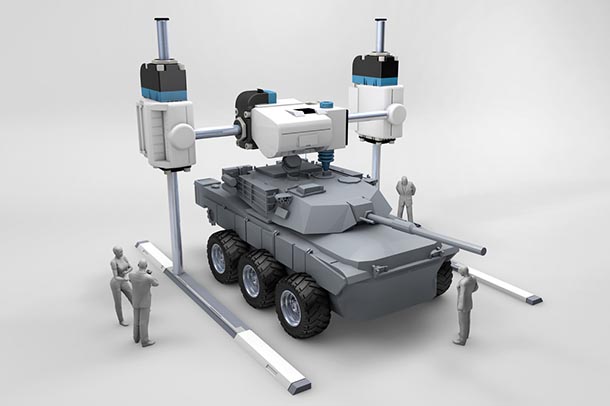
An illustration of military vehicle and ammunition technology printed with 3D printer. IMAGE: ISTOCK/@DEVRIMB
Army grant could advance high-grade steel 3D printing
Through the power of additive manufacturing, these materials could be widely used in defense-related applications, including personal armor and armored vehicles
2/15/2021
By Erin Cassidy Hendrick
UNIVERSITY PARK, Pa. — Researchers in the Penn State College of Engineering received $434,000 from the United States Army to develop additive manufacturing, or 3D printing, techniques for high strength steels and alloys.
High strength and hardness steels are a class of materials that are well suited for and currently used in many defense-relevant applications, such as personal armor, armored vehicles, specialized facilities for blast and ballistic protection and marine ship hulls.
While high-grade steel is well suited for these uses, the material is difficult to manufacture traditionally.
“These steels exhibit much higher cracking sensitivities and lower overall weldability, which make them notoriously challenging to produce,” said Todd Palmer, professor of engineering science and mechanics and materials science and engineering.
Through this project, Palmer, the principal investigator of the project, and Amrita Basak, assistant professor of mechanical engineering and co-principal investigator, plan to expand the use of these materials in ways that will both save costs and increase utility by using additive manufacturing.
The laser-based directed energy deposition (L-DED) additive manufacturing process, which builds a component layer by layer and fuses them together with a laser, could allow engineers to design more intricate pieces. However, the properties of the steel and the printing process to create them need to be better understood and controlled.
“These materials are a completely new class for additive manufacturing,” Basak said. “What we find can help the research community pursue this further, and perhaps the Army will discover new ways to use these materials to further their mission.”
The researchers will specifically study a wire-fed manufacturing process, which introduces the source material compressed into a wire, as opposed to a powder. The researchers suggest this method could increase cost-effectiveness by producing fewer wasted materials.
The researchers explained that Penn State is uniquely positioned to take on this project.
“A real strength of Penn State is our vertical integration around additive manufacturing,” Palmer said. “We have experts on the experimental side and also on materials, numerical methods and machine learning. That’s what sets us apart: We can bring these people across disciplines together.”
Combined with the abilities of the faculty and students, the laboratories at Penn State — such as the Materials Research Institute, the Applied Research Laboratory, Center for Innovative Materials Processing Through Direct Digital Deposition and the Center for Innovative Sintered Products — provide the researchers with the ability to push the current boundary of additive manufacturing.
While a large part of the project will be using computer modeling to test and refine the parameters of the printing process, with these on-campus facilities, the team will not be limited to solely creating simulations. The researchers plan to manufacture large-scale components to provide impactful experimental data.
“In this project, we are exploring very large structures. If we didn’t have 3D printers large enough to create these, we couldn’t do much,” Basak said. “But we have many, and we will use them all to successfully complete this project.”



